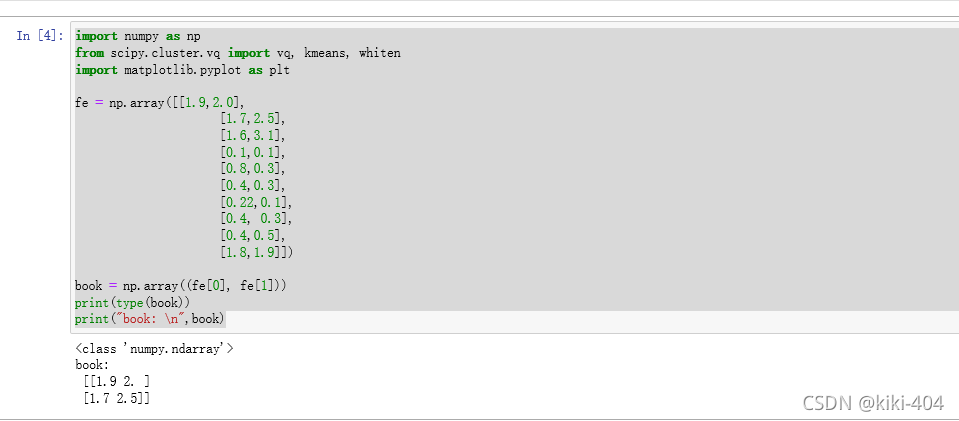import numpy as np
from scipy.cluster.vq import vq, kmeans, whiten
import matplotlib.pyplot as plt
fe = np.array([[1.9,2.0],
[1.7,2.5],
[1.6,3.1],
[0.1,0.1],
[0.8,0.3],
[0.4,0.3],
[0.22,0.1],
[0.4, 0.3],
[0.4,0.5],
[1.8,1.9]])
book = np.array((fe[0], fe[1]))
print(type(book))
print("book: \n",book)
?注:先安装pip install scipy
2.聚类实例
codebook, distortion = kmeans(fe, book)
# 可以写kmeans(wf,2), 2表示两个质心,同时启用iter参数
print("codebook:", codebook)
print("distortion: ", distortion)
plt.scatter(fe[:,0], fe[:,1], c='g')
plt.scatter(codebook[:, 0], codebook[:, 1], c='r')
plt.show()

?3.取出图像的色彩和频次
import os
from PIL import Image
import matplotlib.pyplot as plt
os.chdir(r'C:\\Users')
print(os.getcwd())
im = np.array(Image.open(r'C:\Users\86159\Desktop\python\class7\niu.jpg'))
#用缩略图聚类
def colorz(filename,n=3):
img=Image.open(filename)
img=img.rotate(-90)
img.thumbnail((200,200))
w,h=img.size
print(w,h)
print('w*h=',w*h)
plt.axis('off')
plt.imshow(img)
plt.show()
points=[]
for count,color in img.getcolors(w*h):
points.append(color)
return points
colorz(r'C:\Users\86159\Desktop\python\class7\niu.jpg',3)

?